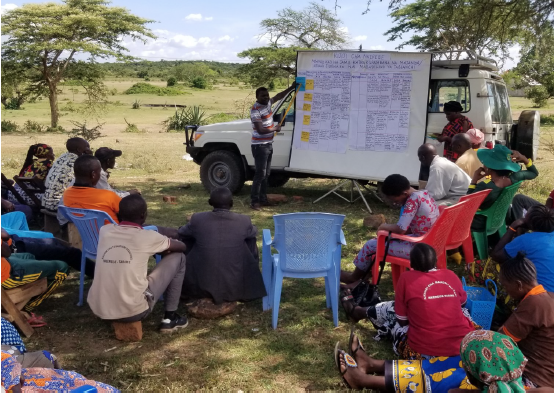First Workshop on Participatory Research Design
SAT successfully contributes to a new way of designing research in Tanzania
We brought together farmers, students and lecturers with the aim to create a space where academic researchers can exchange views with future appliers before taking up their research topics. After two intensive workshop days we contentedly look upon the result of our efforts: we have established research relationships between students and farmers and have identified important challenges in farming to be taken up for research.
Supporting farmers through research is one of our aims. Our organisation, Sustainable Agriculture Tanzania, located in Morogoro city, conducts research on farm, gathering data on organic agriculture issues with the purpose to better understand the constraints of current applied techniques and to help modify and adapt them according to the farmers’ needs. To further develop the concept of involving farmers in academic research we came together with established researchers of Sokoine University of Agriculture in Morogoro (SUA) in order to organize a pilot workshop – the Workshop for Participatory Research Design (WPRD) – aiming to initiate a dialogue between scientists and agricultural producers.

The goal of the WPRD was to invite farmers to depict the challenges they face in their every day work and to involve them in designing the research concepts, which will address those challenges, and develop tailored solutions. Using such an approach we furthermore want to create a channel for local knowledge to be fused with scientific conceptual thinking, thereby increasing the knowledge reservoir of academic research.
Thus on the 22nd of November 2014 ten farmers from the area of Morogoro, thirteen students and four lecturers of SUA arrived at the Farmer Training Centre (FTC) of SAT in Vianzi to join each other in identifying and addressing current challenges in sustainable agriculture. The WPRD, moderated by Prof. Matee, started off by focusing on identifying and analysing the problem areas, hereby giving farmers and students space to elaborate on the issues from their perspective and exchange views in small groups. The workshop proceeded with a deeper analysis of selected challenges in order to determine possible research topics, such as organic pesticides in crop and animal production, soil fertility and marketing development. As a result an initial project design was developed for each of the chosen research topics by interested students and farmers.
Five of the defined research topics will serve SUA students for their final theses, which they will further develop with the support of SAT and the farmers of the WPRD. The remaining topics will be advertised to be taken up by upcoming Master students. Moreover students and lecturers have had the opportunity to receive an account directly from the field whilst farmers have been able to voice their needs to the research community. “It is one thing to only receive your information from books and lectures and another to actually be on the farm and see how things work. You need both if you really want to understand what you have studied” explained a SUA student. Students feel they need to leave the classroom in order to understand their subject and lecturers agree that the same also applies to researchers. “In order to ensure the actual needs of this working area are addressed and the solutions developed in fact are of help, one needs to get involved with the appliers: the farmers” says Prof. Kilasara, soil scientist of SUA.
Following such a successfully implemented workshop on participatory research design SAT will facilitate and monitor the research projects which will be conducted as a result of this workshop and will keep you informed about findings and results.
This has only been the start of what SAT intends to be a long-term project and we are looking forward to continue developing this concept of exchange between science and application in order to close the gap between research and application and facilitate the sustainable development of an agriculture that will contribute to food security.






